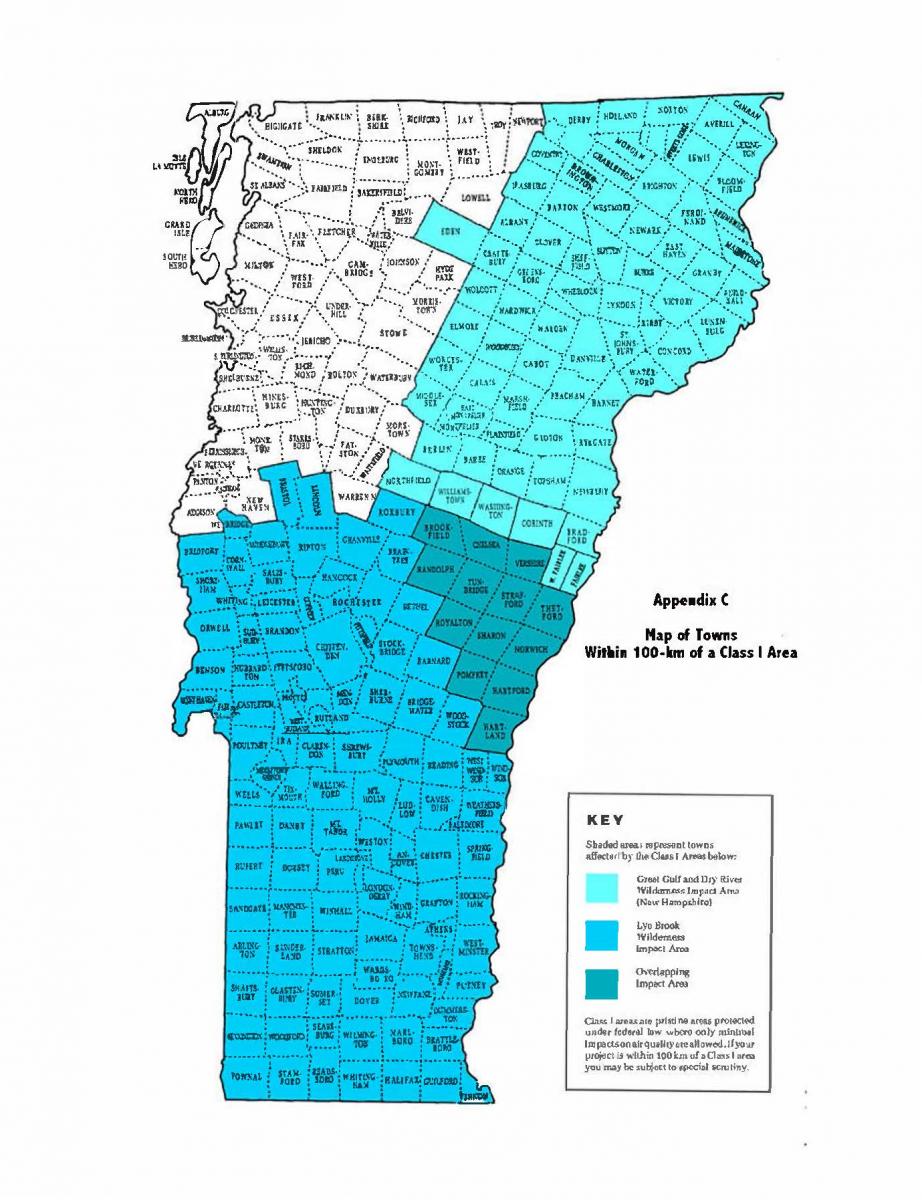Detailed guidance on preparing a Construction Permit can be found in the following documents:
- Construction Permit Application Requirements - New or Modified Stationary Sources
- Certification of Information Accuracy Form
- DEC Notification to Adjoining Landowners Form Letter
- Certification of Notification to Adjoining Landowners Form
- US EPA's Clearing House for Inventories & Emissions Factors (AP-42)
What do I need to do to obtain a Construction Permit?
Please submit the following information to the Permitting and Engineering Section.
Permit applications may be submitted electronically via email to jay.hollingsworth@vermont.gov (Signed certification forms may be submitted as a pdf with digital signature or as a signed and scanned hard copy), or a hardcopy can be printed and mailed to the following address:
Vermont Air Quality and Climate Division
Attn: Jay Hollingsworth - Permitting Section Chief
Davis Building - 4th Floor
One National Life Drive
Montpelier, VT 05620
- Type of Application
- New Source Construction? (i.e. a brand new facility)
- Reconstructing An Existing Source? (i.e. extensive upgrades or repairs to existing equipment)
- Modifying or Installing New Equipment At An Existing Source?
- Site Information
- Name of the source; owner and parent corporation; and operator, if different, as registered with the Secretary of State. Note: The AQCD cannot determine an application administratively complete unless the applicant has registered with the Secretary of State.
- Name, telephone number, and email of application contact(s).
- Location and layout of source.
- Physical location and mailing address, if different.
- Attach maps, sketches and drawings showing:
- A drawing which clearly show the source's layout. Include building dimensions, location of equipment, location of exhaust stacks, etc. Include a north arrow.
- A drawing which clearly show the buildings' side profiles in relation to stack locations, etc. Include dimensions.
- A scaled engineering drawing describing the properties' plot plan. Identify all significant buildings, structures, other on-site uses, and roads. Include a north arrow, property boundaries, estimates of distances to property boundaries and a description of adjacent land uses.
- A U.S.G.S. topographical, town, or highway map depicting the source's location.
- Please estimate the distance from the source to:
- To the best of your knowledge, please state applicability or status with the following federal, state and local regulations or review processes:
- Land Use Permit Review, "Act 250" (10 VSA Chapter 151)? Contact an Act 250 Coordinator
- "Section 248" for new electric generation and transmission facilities (30 VSA Section 248)?
- Other DEC permits? The Division strongly encourages applicants to use the Permit Navigator tool to identify the required environmental permits and approvals for projects on a single parcel. If it is a linear, polygon, or multi-parcel project, contact a Community Assistance Specialist to get started.
- Local zoning or planning requirements?
- Federal New Source Performance Standards (NSPS)? 40 CFR Part 60
- Federal National Emission Standards for Hazardous Air Pollutants (NESHAPs)? 40 CFR Parts 61 & 63
- Operational Information
- Nature of Operation:
- Please provide a narrative description of the facility operations. Be sure to identify and include all individual processes or operations at the facility that may generate air pollution. Some common examples include combustion units (boilers, furnaces, diesel engines, waste oil furnaces, outdoor wood stoves but not motorized vehicles), occasional open burning, dust producing operations (woodworking operations including transfer and disposal of wood wastes, sandblasting, aggregate and other dust producing material handling, processing or transfer operations), solvent degreasing operations, painting and coating operations, printing operations, other evaporative operations or sources of fumes, potential odor producing operations, and volatile organic liquid storage tanks including fuel storage tanks.
- Please sketch a process flow diagram with arrows depicting emissions to the atmosphere.
- For multiple processes using common vents or stacks, please provide an additional sketch of the exhaust system(s) indicating the location of inlets and approximate distances, dimensions, and flow rates.
- Please provide the facilities' SIC code(s) and/or NAICS code(s)
- Equipment Specifications
- Please provide specifications and/or copies of manufacturer's literature for process equipment including maximum design and actual process rates and capacities (see our Source Categories Page for more information).
- Please provide specifications and/or copies of manufacture's literature for all air pollution control equipment.
- Please provide the following parameters for each vent or stack, if known:
- Outlet Height
- Internal Diameter
- Flow Rate: actual cubic feet per minute & dry standard cubic feet per minute
- Moisture Content of Exhaust Gas (% by volume)
- Exhaust Gas Temperature at Outlet
- Velocity at Outlet: feet per second
- Static Pressure, if known: inches of water
- Lack or presence of a rain cap on the stack. For more information, please see our Rain Guard Guidance page.
- Existing or Proposed Operating Limits
- Annual fuel caps, fuel types, fuel sulfur content (% by weight)
- Hourly operation (must be enforceable e.g., non-resettable meters installed, etc.)
- Raw material throughput or final product output caps
- Solvent or coating usage
- If applicable, existing permit limits
- Nature of Operation:
- Quantification of Air Contaminant Emissions
- To assist applicants, the U.S. EPA compiles emission factors for most common air pollution generating equipment and operations in A Compilation of Air Pollution Emission Factors (AP-42). Please include fugitive emissions (dust, vapors, etc.). Attach all sample calculations and assumptions as an Appendix to the application.
- Signed Certification of Information Accuracy Form
- Signed Certification of Notification to Adjoining Landowners Form
- Applicable Construction Permit Application Fees

